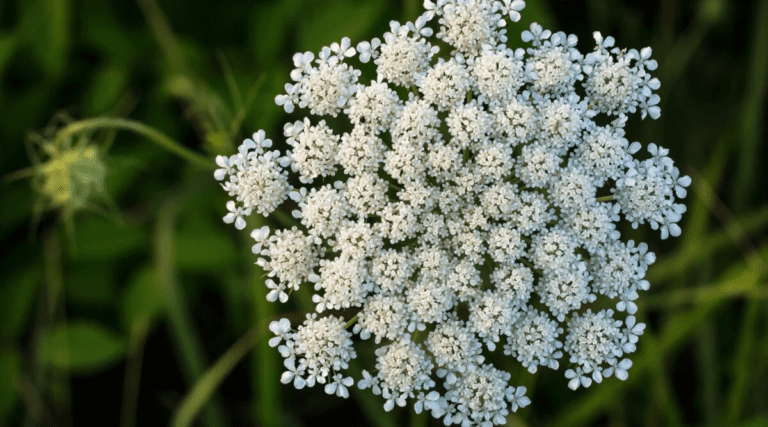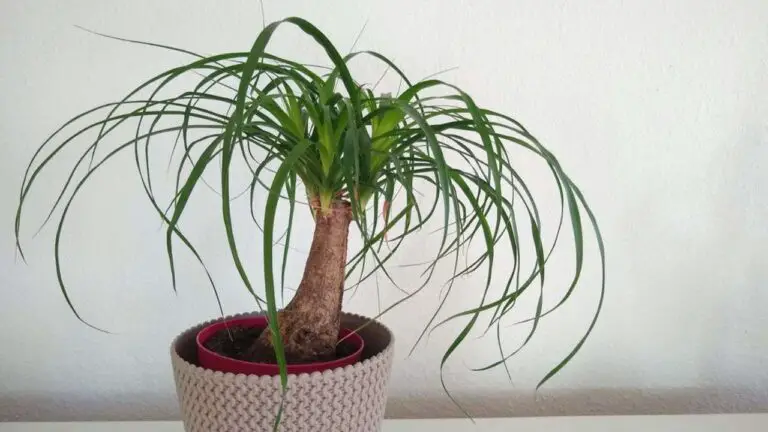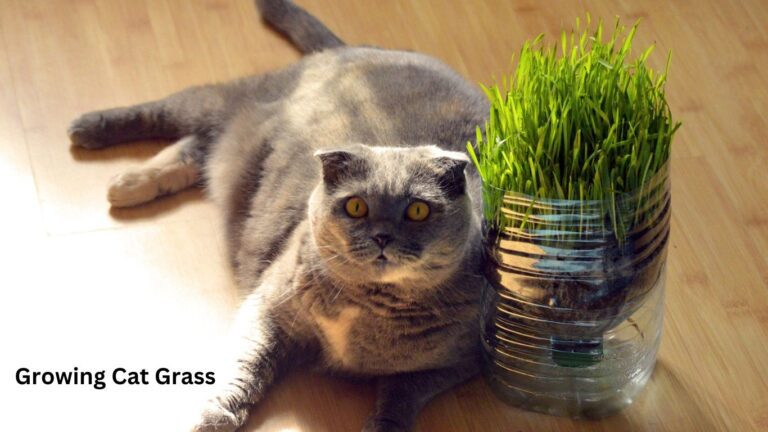How to Eradicate Earwigs: 5 Effective Ways to Handle and Halt These Pests from Your Plants
Table of Contents
Understanding the Earwig Menace: Identifying the Threat to Your Plants
Earwigs may seem like harmless insects at first glance, but they can pose a significant threat to your beloved plants. Identifying these pesky creatures is crucial in effectively combating their presence and protecting your garden. Earwigs are small, elongated insects that feature a distinctive pair of forceps-like pincers at the end of their abdomens. These pincers, although harmless to humans, are used by earwigs for defense and capturing prey. With an average length ranging from 5 to 25 millimeters, earwigs can easily go unnoticed, making it essential to be diligent in detecting their presence.
One characteristic that sets earwigs apart from other insects is their preference for dark, damp environments. This natural affinity for moisture leads them to seek shelter in damp soil, undersides of plant leaves, and even in debris or cracks in your garden. When it comes to their diet, earwigs are not picky eaters and will consume a variety of plant materials, including leaves, flowers, and fruits. This voracious appetite can lead to significant damage, especially in young or vulnerable plants. Additionally, earwigs have been known to feed on decaying organic matter, making compost piles and mulch-filled areas attractive habitats for these pests. By understanding their habitats, diet, and behavior, you can take proactive measures to minimize their impact on your plants.

Creating an Unwelcoming Environment for Earwigs: Key Prevention Methods
To create an unwelcoming environment for earwigs and prevent infestations in your garden, there are several key prevention methods you can employ. Firstly, practicing good garden hygiene is essential. Regularly clean up fallen leaves, debris, and plant matter that can provide ideal hiding spots for earwigs. By eliminating these potential harborages, you can discourage their presence in your garden.
Another effective prevention method is to remove excess moisture from your garden. Earwigs are attracted to damp and humid environments, so be mindful of overwatering your plants. Ensure proper drainage and avoid leaving standing water in pots or around your garden. This will help create an environment that is less favorable to earwig populations.
Furthermore, creating a physical barrier can also be an effective deterrent. Apply a layer of gravel or diatomaceous earth around the perimeter of your garden or directly around vulnerable plants. These substances are abrasive to earwigs and can make it difficult for them to navigate and infiltrate your garden.
By implementing these key prevention methods, you can significantly reduce the likelihood of earwig infestations in your garden. However, it’s important to note that a combination of prevention methods may be necessary for optimal results. Stay tuned for more useful tips on how to control and manage earwig populations effectively.
Natural Predators: Harnessing Nature’s Help in Controlling Earwig Populations
Natural predators can play a crucial role in controlling earwig populations, offering a sustainable and environmentally friendly approach to garden pest management. Several beneficial insects and creatures are known to feed on earwigs, keeping their numbers in check naturally.
One such predator is the ground beetle, a nocturnal insect that preys on a variety of garden pests, including earwigs. These voracious predators are highly effective in reducing earwig populations in gardens. Additionally, birds such as starlings and chickens also have a taste for these pests, helping to regulate their numbers.
By encouraging the presence of these natural predators in your garden, you can create a balanced ecosystem where pests are kept in check, minimizing the need for chemical interventions. This approach not only helps in controlling earwig populations but also contributes to the overall health and sustainability of your garden.

Diatomaceous Earth: A Safe and Effective Barrier Against Earwigs
Diatomaceous earth is a well-known and widely used tool in the battle against garden pests, including the troublesome earwigs. Its effectiveness as a barrier against these unwanted visitors can be attributed to its unique physical properties. Composed of the fossilized remains of diatoms, a type of hard-shelled algae, diatomaceous earth is a fine powder with sharp edges that can penetrate the exoskeleton of insects, causing them to dehydrate and perish.
One of the main advantages of using diatomaceous earth as a barrier against earwigs is that it is safe for both humans and plants. Unlike chemical pesticides, which can pose risks to our health and the environment, diatomaceous earth is non-toxic and does not leave behind harmful residues. This makes it an excellent choice for those who prioritize natural and organic gardening methods.
To apply diatomaceous earth as a barrier, simply sprinkle a thin layer around the base of your plants or along the paths frequented by earwigs. As these pests crawl over the powder, it will stick to their bodies and begin the process of desiccation. However, it’s important to note that diatomaceous earth loses its effectiveness when wet, so reapplication may be necessary after rainfall or irrigation.
Homemade Traps and Baits: Simple yet Effective Solutions for Earwig Infestations
Earwigs can be a persistent nuisance in the garden, but homemade traps and baits can offer a simple yet effective solution for controlling their populations. By using readily available materials and following a few easy steps, you can significantly reduce earwig infestations and protect your plants.
One popular homemade trap involves using rolled-up newspaper. Simply dampen the newspaper and place it near the earwig-affected areas in your garden. The earwigs are attracted to the moist paper and will crawl inside to seek shelter during the day. Each morning, carefully collect the trapped earwigs and dispose of them away from your garden. This method can be highly effective, especially when used consistently over several days.
Another effective homemade bait for earwigs is a mixture of soy sauce and vegetable oil. In a shallow dish, combine equal parts soy sauce and vegetable oil and place it near the areas where earwigs are common. The scent of the mixture will attract the earwigs, luring them into the dish where they will become trapped. Regularly empty the dish and refill as needed.

Neem Oil: Harnessing the Power of Nature’s Insecticide
Neem oil, derived from the seeds of the neem tree, has long been recognized for its potent insecticidal properties. This natural solution harnesses the power of nature to effectively combat a wide range of garden pests, including the notorious earwig. Its plant-based compounds act as a repellent, suffocant, and growth disruptor, making it a versatile weapon in the fight against these garden invaders.
One of the key advantages of neem oil is its low toxicity to humans, beneficial insects, and plants. Unlike synthetic pesticides, which can often have harmful effects on the environment, neem oil leaves no residual toxicity and breaks down rapidly in the soil. This makes it an excellent choice for organic gardeners who prioritize the health and sustainability of their growing spaces. In fact, the United States Environmental Protection Agency (EPA) has classified neem oil as a minimum risk pesticide, further highlighting its safety and effectiveness.
Research studies have also shed light on the specific mechanisms by which neem oil exerts its insecticidal effects. The active compounds in neem oil, such as azadirachtin and other limonoids, disrupt the feeding, growth, and reproductive processes of insects, inhibiting their ability to cause damage to plants. These compounds also act as repellents, deterring insects from feeding on treated plants and reducing the likelihood of infestations.
In addition to its direct impact on earwig populations, neem oil offers a systemic protection to plants. When applied as a foliar spray or soil drench, it is absorbed by the plant and translocated throughout its tissues. This provides ongoing protection against a variety of pests, including earwigs, ensuring the long-term health and vitality of your garden.
As with any pesticide, it is important to follow the manufacturer’s instructions when using neem oil. While it is generally considered safe, excessive or improper use may lead to adverse effects on non-target organisms or plants. As such, it is advisable to conduct a small patch test before widespread application and to always err on the side of caution when determining the appropriate concentration and frequency of neem oil treatments.
By harnessing the power of neem oil, gardeners can effectively combat earwig infestations while maintaining the health and balance of their garden ecosystem. Its natural insecticidal properties and low toxicity make it a valuable tool for both conventional and organic gardeners seeking a safe and effective means of pest control. Whether used as a preventive measure or in response to an active infestation, neem oil is a reliable ally in the battle against earwig invaders.
Removing Attractants: Eliminating Earwig Hideouts in Your Garden
Earwigs are notorious garden pests known for their preference for dark and damp hiding places. To effectively eliminate these hideouts in your garden and discourage earwig infestations, it is essential to identify and address the attractants that lure these critters into your outdoor space. By taking the necessary steps to remove these attractants, you can significantly reduce the presence of earwigs and protect your plants from their destructive feeding habits.
One key attractant that entices earwigs is excess moisture. These insects thrive in damp environments, making it crucial to control moisture levels in your garden. Ensure proper drainage in your flower beds and pots, as excess water can accumulate and create a haven for earwigs. Additionally, regularly inspect your garden for areas that may retain moisture, such as piles of decaying leaves or vegetation. By removing these potential water sources, you can make your garden less appealing to earwigs and discourage their presence.
Another common attractant for earwigs is organic debris and clutter in the garden. Fallen leaves, mulch, and woodpiles provide hiding spots and food sources for these pests. Regularly clean up any leaf litter, especially around the base of your plants, and avoid leaving organic matter to accumulate. Additionally, store firewood away from your garden and remove any unnecessary clutter that could serve as favorable hiding places for earwigs. By maintaining a clean and tidy garden environment, you can eliminate potential earwig hideouts and minimize the risk of infestation.
Staying Vigilant: Regular Inspections for Early Detection and Prevention
Regular inspections are vital for early detection and prevention of earwig infestations in your garden. By conducting routine checks, you can stay ahead of these nuisances and take prompt action to protect your plants. Inspecting your garden at least once a week will allow you to identify any signs of earwig activity, such as chewed leaves, small tunnels in the soil, or the presence of earwigs themselves.
During your inspections, pay close attention to areas where earwigs are likely to hide or lay eggs, such as under pots, in mulch or debris, and in crevices around plants. It’s also important to inspect the base of the plants, as earwigs tend to feed on tender stems and foliage near the ground. By being thorough in your inspections, you can catch earwig infestations in the early stages, making it easier to control their population and minimize damage to your garden.
Organic Insecticides: Safely Eliminating Earwigs without Harming Your Plants
Organic insecticides offer a safe and effective solution for eliminating earwigs without causing harm to your beloved plants. These natural products are formulated with ingredients derived from plants or bacteria, ensuring that your garden remains free from toxic chemicals. By selecting organic insecticides, you can effectively control earwig populations while maintaining a healthy and sustainable garden ecosystem.
One popular organic insecticide option is pyrethrum, which is made from the flowers of chrysanthemums. This natural compound acts as a broad-spectrum insecticide, targeting earwigs and an array of other garden pests. Pyrethrum-based sprays can be applied directly to affected areas, effectively immobilizing and eliminating earwigs on contact. It is essential to follow the instructions on the product label to ensure safe and optimal use.
Companion Planting: Utilizing Natural Repellents to Deter Earwigs
One effective technique for deterring earwigs from infiltrating your garden is companion planting, a method that harnesses the natural repellent properties of certain plant combinations. By strategically positioning plants that repel earwigs alongside your vulnerable crops, you can create a less inviting environment for these pests.
Marigolds, for example, have long been known for their ability to deter a variety of garden pests, including earwigs. Their strong scent and bitter taste act as a deterrent, making them an excellent choice for companion planting. Consider planting marigolds around the perimeter of your garden or interspersing them among your prized plants to create a protective barrier against earwigs. Another beneficial companion plant is garlic, which not only repels earwigs but also has numerous health benefits for humans. By incorporating garlic into your garden, you can deter earwigs while enjoying its flavorful harvest.
Overall, companion planting provides a natural and chemical-free approach to deterring earwigs and other unwanted garden pests. By understanding the specific plants that repel earwigs, you can strategically plan your garden layout to create an environment that is less attractive to these pests. In the following sections, we will explore other effective methods of repelling earwigs and keeping your garden healthy and thriving.
| Companion Plants for Deterring Earwigs | Key Information |
|---|---|
| Marigolds (Tagetes) | – Marigolds emit a strong scent and have a bitter taste that deters earwigs. – Plant marigolds around your garden’s perimeter or intersperse them among other plants to create a protective barrier against earwigs. |
| Garlic (Allium sativum) | – Garlic is known to repel earwigs and offers various health benefits for humans. – Incorporate garlic into your garden to deter earwigs while enjoying its flavorful harvest. |
| Companion Planting Strategy | – Companion planting involves strategically placing plants to enhance each other’s growth or provide natural pest control. – By selecting plants that repel earwigs, you can create a garden environment less attractive to these pests. |
Proper Moisture Control: Minimizing Earwig Favorable Conditions in Your Garden
Proper moisture control plays a vital role in minimizing the favorable conditions for earwigs in your garden. These pesky insects thrive in moist environments, making it essential to implement effective moisture management strategies. Excess moisture can attract earwigs and provide them with a conducive habitat for breeding and feeding. By taking proactive steps to regulate moisture levels, you can significantly reduce their presence and protect your plants from damage.
One key approach to moisture control is ensuring proper drainage in your garden. Standing water or waterlogged soil provides an ideal breeding ground for earwigs. To avoid this, consider incorporating well-draining soil amendments or creating raised beds that allow excess water to flow away. Additionally, implementing a drip irrigation system instead of overhead watering can help limit moisture accumulation on the soil surface, therefore reducing earwig-friendly environments. By carefully managing water distribution, you can discourage these pests and create an environment that is less favorable for their survival.

Pruning and Sanitizing: Eliminating Potential Earwig Harborages
Pruning and sanitizing your garden is an essential step in eliminating potential earwig harborages and preventing infestations. By removing excess vegetation and maintaining a clean and tidy environment, you deprive these pests of their preferred hiding places and breeding grounds.
Start by inspecting your garden for any overgrown or dead foliage, as these provide ideal shelter for earwigs. Pruning away dense vegetation and thinning out crowded areas will not only improve air circulation but also eliminate potential hiding spots. Be sure to dispose of any pruned materials properly, as earwigs can easily reinfest your garden if they find refuge in the compost pile or nearby debris. Additionally, regularly removing fallen leaves and plant debris will further reduce the chances of earwigs finding suitable habitats.
Seeking Professional Assistance: When DIY Methods Fall Short.
When it comes to dealing with earwig infestations in your garden, sometimes the DIY methods may not be enough to completely eliminate the problem. In such cases, seeking professional assistance can be a wise decision. Professional pest control companies have the knowledge, expertise, and specialized tools to effectively tackle earwig infestations, ensuring the long-term health and vitality of your plants.
One of the main advantages of hiring professionals is their ability to accurately assess the severity of the infestation and develop a customized treatment plan tailored to your specific situation. They have access to professional-grade insecticides and techniques that are not available to the average gardener. This ensures that the treatment is targeted and effective, reducing the chances of any harm to your plants or the surrounding environment.
Working with professionals also provides you with peace of mind, knowing that you are entrusting the task to trained experts who have dealt with similar infestations before. They can provide valuable advice on how to prevent future infestations and answer any questions or concerns you may have. So, when your DIY methods fall short and earwigs continue to wreak havoc on your garden, don’t hesitate to seek professional assistance to regain control and restore the balance in your green oasis.
| Situation | When to Seek Professional Assistance |
|---|---|
| Persistent Pest Infestations | – If DIY pest control methods fail to address a persistent pest issue. |
| Complex System Malfunctions | – When hydroponic system malfunctions are beyond your expertise to diagnose and repair. |
| Unexplained Plant Health Issues | – If plants consistently show signs of poor health, and DIY efforts do not yield improvement. |
| Advanced Nutrient Deficiencies | – For cases where nutrient deficiencies are complex, requiring expert analysis and specialized solutions. |
| Complex Environmental Factors | – When managing environmental factors such as temperature, humidity, or CO2 becomes challenging. |
| Advanced System Upgrades or Installations | – For intricate upgrades or installations in your hydroponic system that surpass your DIY capabilities. |
| Consultation for Optimal System Design | – Seeking professional advice for designing an optimal hydroponic system based on specific needs and goals. |
| Legal or Compliance Issues | – Addressing legal or compliance concerns related to hydroponic farming. |
| Large-Scale Commercial Hydroponic Ventures | – For large-scale commercial hydroponic projects where precision and efficiency are paramount. |
What are some signs that indicate my plants are being threatened by earwigs?
Some signs that indicate your plants are being threatened by earwigs include chewed leaves, flowers, or fruits, as well as holes or tunnels in plant stems.
How can I create an unwelcoming environment for earwigs in my garden?
Creating an unwelcoming environment for earwigs can be achieved by reducing moisture levels, eliminating debris and hiding spots, and keeping the garden clean and well-maintained.
Are there any natural predators that can help control earwig populations?
Yes, there are natural predators such as birds, toads, and ground beetles that can help control earwig populations by feeding on them.
What is diatomaceous earth and how does it help in controlling earwigs?
Diatomaceous earth is a natural powder made from fossilized remains of diatoms. It works by dehydrating and damaging the exoskeleton of earwigs, effectively controlling their population.
Can homemade traps and baits be effective in getting rid of earwig infestations?
Yes, homemade traps and baits can be simple yet effective solutions for earwig infestations. These traps can be made using oil-soaked cardboard or rolled-up newspaper to attract and trap the earwigs.
How can neem oil be used to control earwigs in the garden?
Neem oil, a natural insecticide, can be sprayed on plants to repel and kill earwigs. It disrupts their feeding and reproductive abilities, helping to control their population.
What are some common attractants for earwigs that should be removed from the garden?
Common attractants for earwigs include decaying organic matter, piles of leaves or mulch, and damp areas. Removing these attractants from the garden can discourage earwig infestations.
How often should I inspect my garden for early detection and prevention of earwigs?
It is recommended to regularly inspect your garden at least once a week for early detection and prevention of earwigs. This allows you to identify and address any issues promptly.
Can organic insecticides effectively eliminate earwigs without harming my plants?
Yes, organic insecticides made from naturally derived ingredients can effectively eliminate earwigs without harming your plants. These insecticides target and control earwigs while being safe for the environment.
How does companion planting help in deterring earwigs?
Companion planting involves planting certain plants that repel or deter earwigs. For example, planting garlic, chives, or marigolds near susceptible plants can help deter earwigs from infesting them.
What is the importance of moisture control in minimizing earwig favorable conditions?
Moisture control is crucial in minimizing earwig favorable conditions because earwigs thrive in damp environments. By reducing excessive moisture in your garden, you can discourage their presence.
How does pruning and sanitizing help eliminate potential earwig harborages?
Pruning and sanitizing involve removing dead or decaying plant material, as well as clearing out debris and clutter in the garden. This eliminates potential hiding spots and breeding grounds for earwigs.
When should I consider seeking professional assistance for earwig control?
You should consider seeking professional assistance for earwig control when DIY methods have failed to effectively eliminate the infestation or when the infestation is severe and causing significant damage to your plants.

Beck Wakeford is a dedicated writer at SouthElMonteHydroponics, with a fervent enthusiasm for agriculture and technological innovation. Armed with a degree in Agricultural Engineering from a leading university, Beck specializes in hydroponic systems design, automation, and optimization. Their passion for merging traditional farming with cutting-edge technology drives them to explore novel solutions for sustainable food production. Beck’s expertise and keen interest in the intersection of engineering and agriculture make them a valuable asset in the quest for efficient and eco-friendly farming practices. Through their writing, Beck aims to inspire others to embrace the potential of hydroponics in shaping a more sustainable future.






